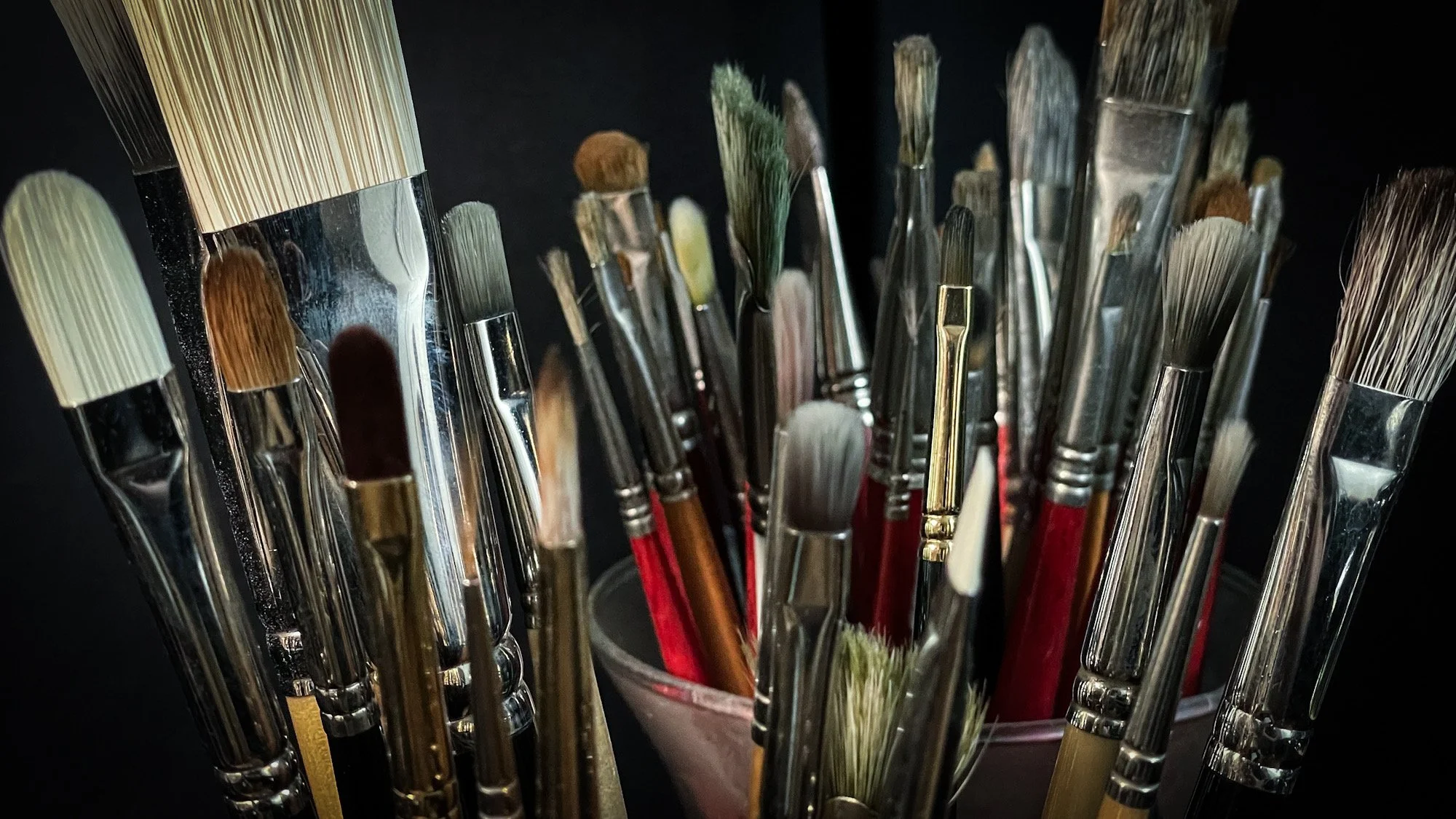The Brushes That Shape My Art
The following post is a short one and my hope is to spark interest in your choice of tools in the studio. This is not an endorsement or a way to influence your choices but rather an introduction into one of my favorite tools—brushes.
In my artistic journey, the brush is more than a tool—it’s an extension of my soul. As Henry Ward Beecher once said, “Every artist dips his brush in his own soul, and paints his own nature into his pictures.”
I favor rounds, filberts, and flats—especially from Da Vinci and Rosemary & Co.—not for the brand name, but because they disappear in my hand. When the tools become invisible, pure creativity flows. Despite today’s endless brush options, it’s worth noting the Old Masters mostly used rounds. Maybe they were onto something.
Historically, brushes evolved alongside artistic demands. Holbein’s precision, Van Dyck’s elegance, Rembrandt’s bold impasto, and Vermeer’s delicate glazes all shaped how brushes were made and used. Then there’s Sargent—wielding his brush like a wand—reminding us how the right tool can transform a painting.
I wrestled with the unruliness of oil at first. My love for line, structure, and control—born from pen-and-ink and watercolor—guided me toward softer brushes. Hog bristles felt too aggressive. So I leaned into my instincts, favoring transparency and layered edges over brute force.
Trust your hand. Trust your tools. That’s what I’ve learned.
Now I’d love to hear from you—
What brushes do you swear by in your oil painting practice?
Have you transitioned from another medium and found tools that smoothed the way?
Drop a comment below and let’s talk brushes. After all, the tools we choose shape the art we create.
